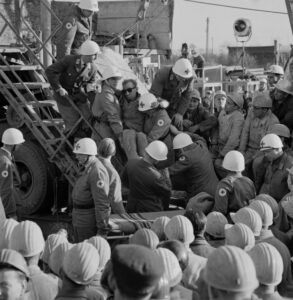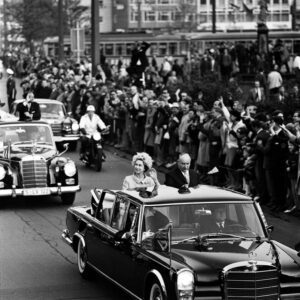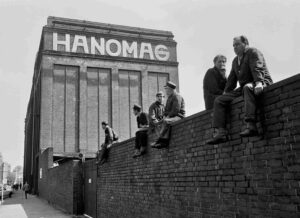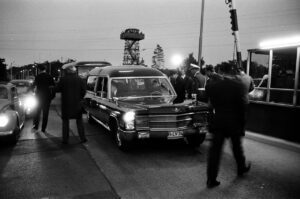It is early summer 1961 in Hanover. Twenty-year-old Joachim Giesel, who has recently passed his journeyman’s examination to become a photographer, is sitting in an office of the Hannoversche Presse. A few months earlier, the newspaper had set up a photo editorial department, to which he successfully applied on the recommendation of journalist Hans Rohrberg. This first permanent position meant more than just a secure and steady income for the talented young photographer and family man. His entry into press photography also marked the start of a successful and varied career as a photojournalist that would last for decades. What Giesel feels immediately after starting work on June 1 is the pressure to perform, which is not least due to the significantly lower level of professional experience compared to the photojournalists already established in Hanover. But with his unconventional, fresh approach to photography, he counters prejudices about his young age and quickly makes a name for himself among his experienced colleagues. In order to stand out from the competition, Giesel followed the motto “Everything different from everyone else”, which he still describes as the guiding principle of his work today. He is often the first to arrive and the last to leave. If it is necessary to ring the doorbell of other people’s homes to get the best view of what is going on, he does so. He sees himself first and foremost as an observer. “I don’t want to intervene, I observe and let things happen,” is how he describes his press photography practice. He does not divide the quality of a photograph into “good” or “bad” according to the classic evaluation scheme. For him, there is only the “right” or the “wrong” picture. What is important is that it is authentic and achieves the intended effect. He was soon assigned three to four reports a week in addition to smaller assignments. Their range is broad, in line with the newspaper’s profile, and takes him to a wide variety of places: From reports on local fire department operations or the camp of Protestant girl scouts to international attention-grabbing events such as the mine accident in Lengede or the transfer of Benno Ohnesorg’s body through the GDR to West Germany. His skills were also appreciated by his employer. On the occasion of Queen Elizabeth II’s visit to Hanover, he was called back from a training course in Hamburg to photograph the major event for his newspaper. Giesel worked as a permanent employee for the Hannoversche Presse for five years until 1966, when he began a new chapter in his career as a freelance photographer. As a freelance photographer, however, he remained true to the field of professional journalism and continued to work freelance for the press, including major publications such as Stern and Der Spiegel.
Jonathan Fulda



